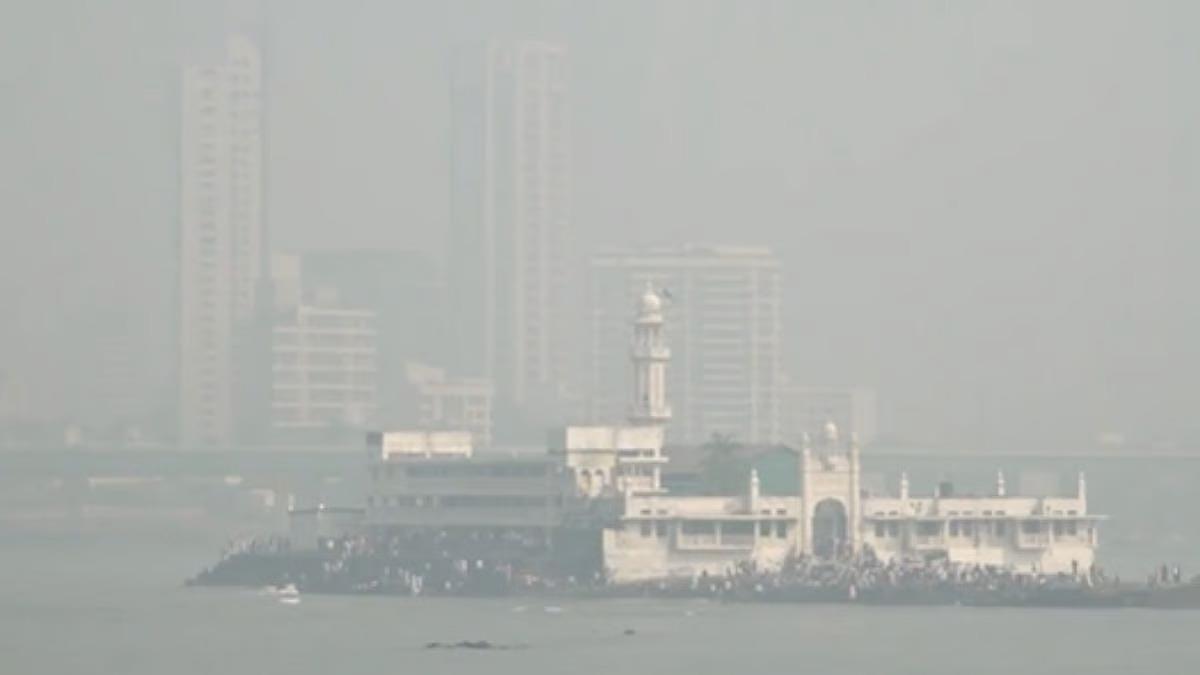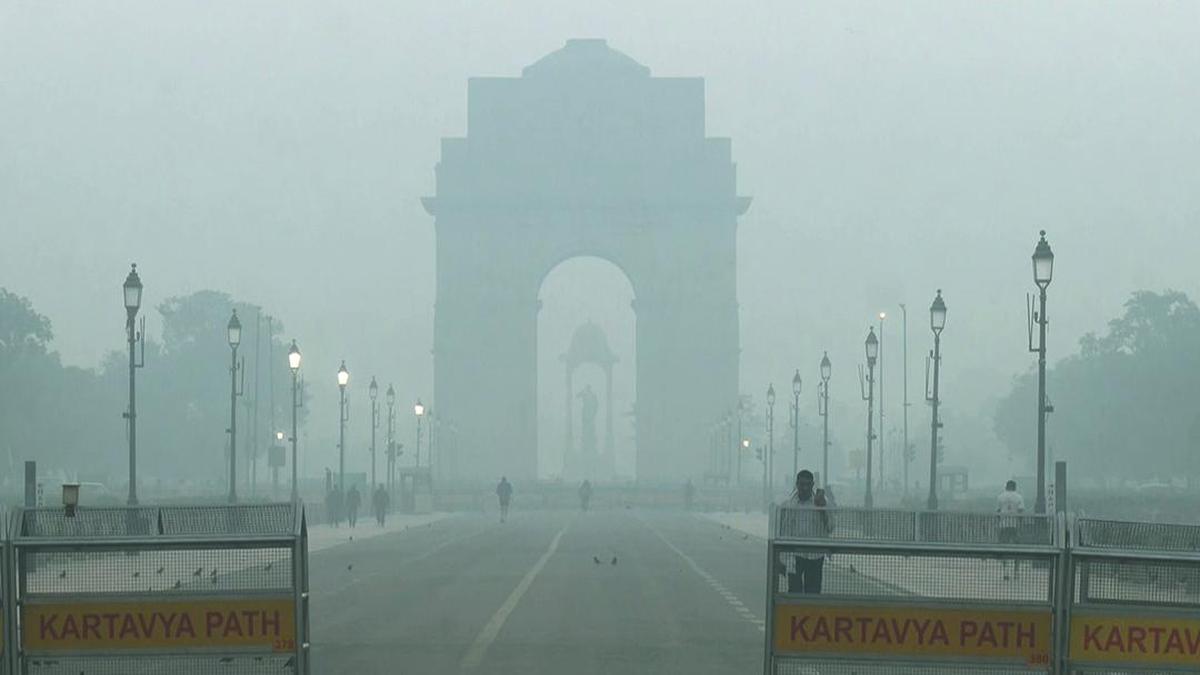Views
25
Itsnever a surprise to find Delhi in news for its escalating air pollution levels. Delhi is on thecusp of a re-run of the same situation: a combination of high levels ofpollution as a result of forest fires and agricultural burning, fireworksduring the Deepavali celebrations and changing meteorological conditions.
Delhi and the National Capital Region is an urban ecosystem which is known for the river Yamuna and the Northern extension of Aravalli hills constituted as the Delhi Ridge. According to a survey of 1,600 global cities by the World Health Organization, the air quality in Delhi is the worst amongst any city in the world; which irreversibly damages the lungs of 2.2 million or 50 per cent of all children in Delhi. Not only this, in a recent report by the Ministry of Earth Sciences, it was showcased that the total emission of particulate matter (PM 2.5) increased in Delhi by 12 per cent in 2018 as compared to the year 2010. The report further showcased that transport is the major contributor to this increase (41 per cent) followed by windblown dust from roads and other sources (21.5%) and industries (18.6%). This particulate matter of 2.5 is fatal for human lungs as it causes several respiratory problems.
Furthermore,Delhis aquifers also stand in danger of depletion on account of excessive use;rampant construction activity has contaminated them with cement, paints,varnishes and other construction materials. As per the data of Delhi Government,a total of 112,169 trees have been cut down from 2005 to February 2018 for the construction of Delhi Metro and RapidTransit System. Avian diversity is also on the decline in Delhi; perhaps theconsiderable example of this are the sparrows, which were once abundant in theregion. Not to forget, the major culprits – dust particles from Rajasthan,drift towards the NCR and theurban heat island effect leads to the formation of a low pressure over Delhi,which causes the movement of the wind towards the capital.
According to the Down ToEarth Magazine, for more than 3 billion years, the Aravallis have stood strongagainst the advance of the Thar Desert towards the fertile soils of easternRajasthan and the Indo-Gangetic plains – preventing dust from entering Delhiand checking its air quality. However,now, the oldest mountain chain stands degraded- the range has shrunk by 40 percent over the last four decades. The Aravalli range plays a critical role inchecking the wind velocity and evaporation to prevent sand migration from theThar Desert to Delhi-NCR.
Measures taken up by social enterprises like Grow-Trees to restore the green cover that the capital once relished are the need of the hour. Grow-Trees allows corporates and individuals to greet their loved ones with eTreeCertificates® at a nominal rate of 85 INR. Despite having many state-sponsored comprehensive plans for pollution checks, they still remain on the paper and are not being implemented. The only green fix that can potentially control the air pollution levels, without much investment are trees. We often wonder how something so basic can restore extensive problems of the capital city. Trees or forests are believed to the jewel house of ecosystem diversity and there would be nothing better than restoring them in the centres of entropy for checking air pollution and creating relaxation points in the urban landscape., says Bikrant Tiwary, CEO of Grow-Trees.
Grow-Trees has started its project of planting 25,000 native trees to increase forest cover for nearly 25 hectares of land in the areas of Burari, Jagatpur, Mayur Vihar, Mukundpur, Nirankari Sarovar in Delhi-NCR region. The trees in the project are sought to improve the overall air quality and ecosystem services by acting as carbon sinks for the massive amounts of carbon dioxide generated every day from automobiles, industries, dust, etc. Trees will help in sequestering atmospheric carbon during photosynthesis and return oxygen back into the atmosphere as roughly half of the greenhouse effect is caused by C02 at the Earths atmosphere. Implementing the project will greatly support the sequestration of 1,250,000 pounds of atmospheric carbon dioxide annually (average 50 pounds of carbon dioxide sequestered per tree per year -Forestry Research and Engineering, May 2018). Elimination of particulate matter from the atmosphere through trees will automatically reduce respiratory problems. The presence of trees in urban landscape diminishes fine particulate matter in the atmosphere within a few hundred meters of the plantation range. Other benefits of trees include – reduction of topsoil erosion, decrease in the force of storms and surface runoff, replenishment of groundwater table, removal of toxic minerals from the aquifers and reduction of street flooding and sedimentation in streams.
Apart from this, treeswill attract a host of birds and animals which are almost on the verge of extinctionlike sparrows. Treeswill also provide shade, reduce water and air temperatures and contribute tothe overall health of aquatic and terrestrial ecosystems by providing habitat,shelter and food to their species. Thus, the project also contributespositively to the United Nations 2030 agenda on Sustainable Development Goalson Climate Action (13) and Life on Land (15) with the promotion of large nativeforests.
Trees species like Ashoka, Neem, Golden shower (Cassia fistula), Arjuna, Gulmohar amongother valued native species will be planted. These species have been selected with stakeholder consultations based onthe local suitability, survivability, and usage.
Such initiatives are precedent of how private entities canprovide holistic approaches for managing the current soaring pollution levelsin urban landscapes like Delhi. Social enterprises like Grow-Trees have beencreating positive effects that influence local and regional development bysatisfying local and regional needs, creating jobs in the community, developingrelational assets in business processes, and restoring community solidarity.Through the help and engagement of local communities, Grow-Trees strives forthe improvement of services endowed to us by mother nature.
Over the last 9 years, Grow-Trees has been able to successfully plant over 4 million trees across 16 states of India. The projects over the years have addressed themes related to wildlife and biodiversity, water, the Himalayas, and rural and tribal communities. Their nominal rate of 85 INR for planting and consistency has made them the Indian stalwarts of forests. Started by Mr Pradip Shah, the founder of Indias first credit-rating agency, CRISIL and Mr Karan Shah, Grow-Trees is known for providing timely audits through third-party organisations on the successful completion of the project. These audits provide corporates with authentic and reliable data to report in their annual reports. And, if by any case, there are fewer saplings, Grow-Trees grows them again through their own resources. We are driven to plant a million trees this monsoon, irrespective of any external help as our organization is completely based upon self-sustainable approach, shares Bikrant Tiwary, CEO of Grow-Trees.com. Aside from planters, Grow-Trees has more than 500 corporate partners who regularly honour their employees/customers/stakeholders through their customized eTreeCertificates® and firmly believe in investing heavily in the realm of sustainability.
Subscribe to our newsletter and recieve a selection of our cool articles every week.

When Mumbai’s Morning Haze No Longer Feels Like Home
Mumbai Weather Update: AQI Turns Severe as Thick Haze Persists, Free Press Journal (FPJ).
Nov 24, 2025

Delhi Is Gasping Again, And This Time, Even the Clouds Refused to Help
Delhi is choking again. AQI levels have slipped into the ‘severe’ zone, cloud seeding failed, and emergency measures barely make a dent. Because the city doesn’t need one-off fixes, it needs long-term healing. Trees remain the simplest, most effective answer. They absorb carbon, trap dust, cool the air, and act as natural lungs. If Delhi wants cleaner winters, it needs more green cover, not just temporary interventions. Clouds may not cooperate, but trees always will.
Nov 17, 2025
Copyrights @ 2025 All rights reserved by Pangea EcoNetAssets Pvt Ltd.